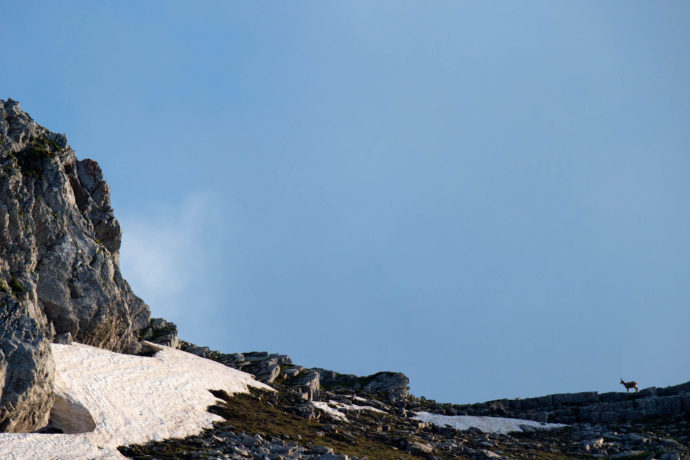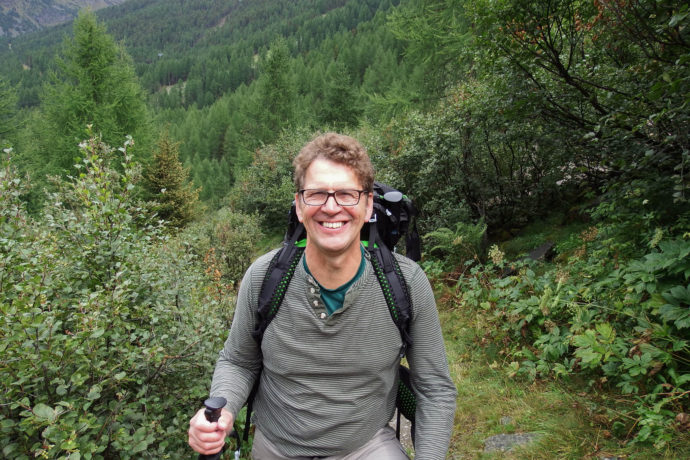The rewilding movement is gaining momentum. But for the rewilding process to maximise its beneficial impact, it needs European conservation policies under which it can really thrive.

A fresh approach
Today rewilding represents an exciting opportunity to refashion conservation for the twenty-first century. As a new conservation approach, it has the potential to attract new investment and generate significant social, ecological, and economic returns across the continent for the next few decades.
Rewilding Europe wants rewilding to become a new, additional and widespread conservation approach in Europe, according to the working definition we have presented. To do this, it needs a supportive, enabling policy environment.
Natural value is under pressure across Europe due to economic and development pressures. In 2015 the European Commission embarked on a “fitness check” of its nature legislation. This move resulted in a successful campaign, supported by half a million European citizens, to keep legislation in its current form and focus on better implementation.
In its Policy Brief, released in May 2016 and written and researched by Frans Schepers and Dr. Paul Jepson of the University of Oxford’s School of Geography, Rewilding Europe calls on the European Commission to now acknowledge the rise and significance of rewilding in its nature conservation and land use policies going forwards.
“In future legislation we would like to see the EC recognise rewilding as a new inter-disciplinary conservation approach that could really ramp up the scope and effectiveness of EU nature policy in a cost-efficient way,” says Frans Schepers. “As part of this recognition, we would like the EU to support and invest in rewilding initiatives and studies, and to engage in dialogue with the rewilding movement in preparation for the 2030 biodiversity strategy.”
Opportunities and challenges
The challenge for European policy makers now is how to find spaces in nature legislation and policy that will both protect the gains of the past, and provide the flexibility to allow the rewilding movement to innovate and develop. Thanks to the flexibility of rewilding, which focuses on “upgrading” ecosystems, Rewilding Europe believes spaces for such innovation exist not only in Europe’s protected nature sites, but right across the wider European landscape, including smaller and even urban areas where ecological processes could be improved.
Yet before rewilding can become a mainstream conservation tool in Europe, Dr. Paul Jepson believes a number of obstacles need to be overcome.
“Firstly, you have institutional intertia,” he says. “Some people fear that if we open up the way we practice conservation then biodiversity may become more vulnerable to development. Secondly, conservation is used to dealing with finite metric. As a dynamic process, some see rewilding leading to uncertainty over the measurement of outcomes.”
There are also issues over the classification of wild herbivores. A key objective of Rewilding Europe is the restoration of trophic cascades. These rely on the presence of a variety of species across a fully functioning food-chain, including large herbivores that were once roaming Europe but now only exist in domesticated form.
“Although rewilding of horses and bovines is now happening over more than 20 years, animals like these are still classified as domestic livestock according to current legislation,” says Jepson. “This throws up certain probems.”
Rewilding Europe is currently working with a variety of partners on a project to promote formal wild status for free-roaming horses in Bulgaria’s Rhodope Mountains. This will hopefully bring about a legislative step forward.
Lastly, there is Europe’s green lobby, which exerts a powerful influence over EU conservation policy. ‘’The problem here is that whilst EC conservation lobbyists are keen to discuss rewilding they don’t have a mandate from the NGO networks they represent to actively push for policy reforms to support rewilding” says Jepson. “It’s largely a question of time, but we also need to actively build understanding and buy-in for rewilding principles among international, national and local conservation bodies.”

A conservation evolution
Europe’s current conservation logics are not sufficient to halt and reverse the continent’s declining biodiversity, with legislation as it stands doing little to encourage and facilitate the restoration of natural ecosystems.
“When you break it down, European conservation in the 1980s was about protecting species and habitats,” says Jepson. “In the 1990s and 2000s we saw a greater emphasis on connectivity and creating networks. The next step, which is where rewilding comes in, is to prioritise functional dynamics and processes. Only these three dimensions together can ensure effective ecosystem restoration.”
Progress towards the 15% ecosysem restoration target in the EU’s 2020 Biodiversity Strategy has been largely disappointing. One of the issues here is uncertainty concerning the recurrent costs that such restoration may incur. With its cost effective approach to ecosystem restoration, rewilding offers a solution. By restoring dynamic, self-sustaining ecosystems and catalysing new enterprise and economic activity, it holds the promise of significantly reducing recurrent management costs. Moreover, it can generate new investment and income streams, creating powerful incentives for stakeholders and local communities to value their natural capital and support conservation.
Green infrastructure and identity
In Europe today infrastructure development generally involves fixed assets and structures. Yet by generating more opportunities to connect natural assets with enterprise and economy, Rewilding Europe believes that rewilding could help to create a large-scale green infrastructure across the continent. Such a green infrastructure could help to build and strengthen a common European identity. The role of parks in constructing or reasserting national and regional identities, such as in the United States in the nineteenth century, is already well established.
“I think many Europeans lack a visual picture of the continent where they live,” says Jepson. “As yet, there is no European Yellowstone or Serengeti. Rewilding can change that by putting places on the map, by giving people a collecitive sense of the expanse and beauty of our continent.”
As a natural continuation of the rewilding process, Rewilding Europe imagines a pan-European network of landscapes that capture the public imagination on account of their blend of natural spectacles, past and future ecologies, iconic wildlife species and authentic and modern ways of living.
Rewilding on the rise
Dr. Paul Jepson is confident that rewilding will one day be fully recognized in European environmental legislation as a mainstream conservation tool.
“I think we’re looking at a 10 to 15 year horizon here,” he says. “”We still need to convince people that rewilding generates outcomes for both people and nature. This is where Rewilding Europe’s pilot areas are vital. As rewilding showcases, they help people to understand and build confidence.”
Moving forwards, rewilding represents an opportunity for conservation policy to shift gears, switching the focus from protecting and designating to restoration that upgrades ecosystems, improves network connectivity and creates new values for the people of Europe.
“With its holistic, rounded, innovative approach, rewilding represents a new generation of conservation,” says Jepson. “By connecting wild nature to people, society and economy, it really captures the zeitgeist.
“In terms of creating a policy space for rewilding, we’re still in the early days,” he continues. “The next two or three years will be very interesting. We need to maintain the momentum and dialogue, and ride the wave to the next level.”
The “Making space” story was first published in the Rewilding Europe Annual Review 2016.
